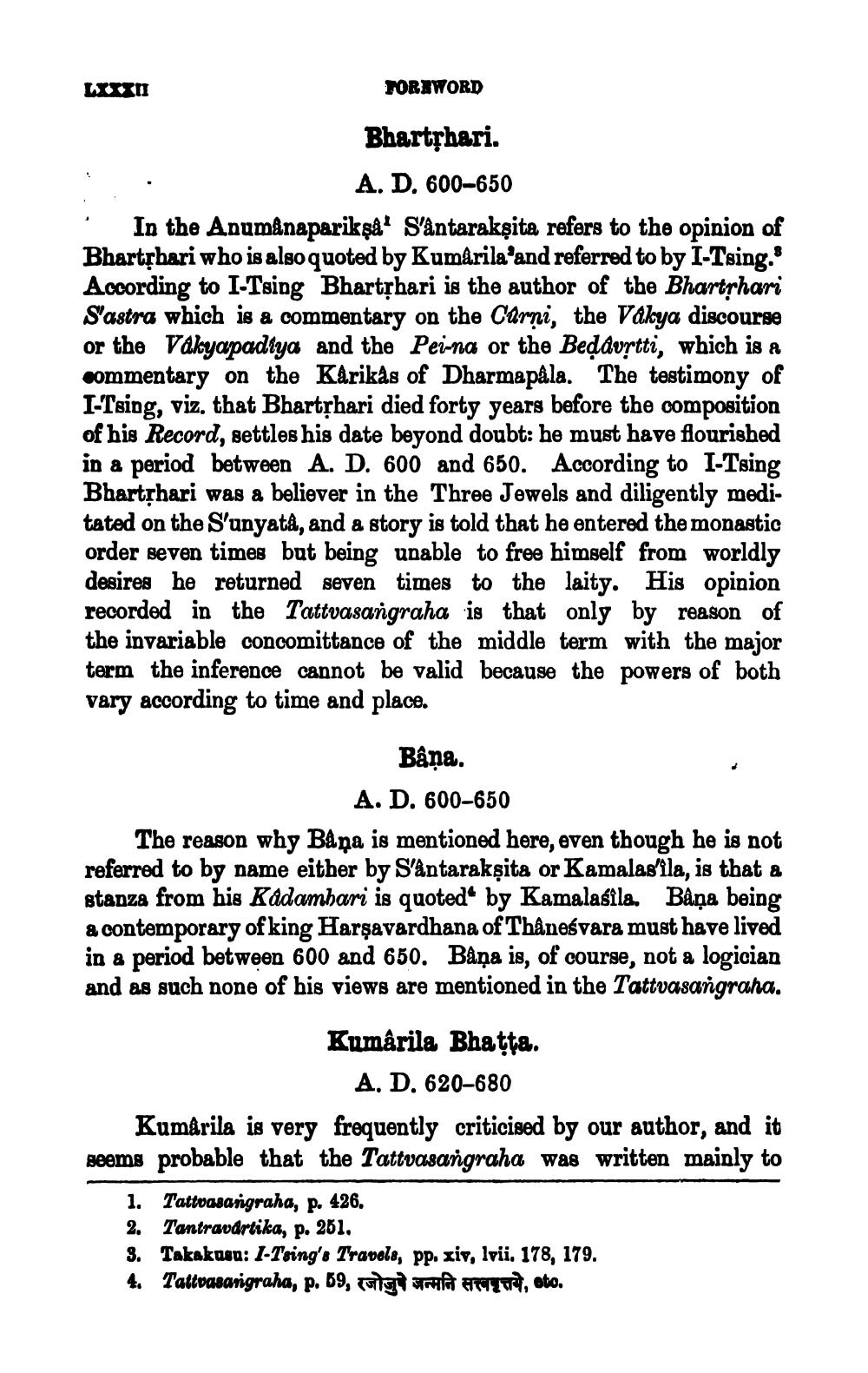________________
TORIWORD
Bhartrhari.
A. D. 600-650 . In the Anumånaparikşa? S'ântarakṣita refers to the opinion of Bhartsbari who is also quoted by Kumarila'and referred to by I-Tsing. According to I-Tsing BhartȚhari is the author of the Bhartyhari S'astra which is a commentary on the Carni, the Vakya discourse or the Vakyapadiya and the Pei-na or the Beļavrtti, which is a commentary on the Karikas of Dharmapala. The testimony of I-Tsing, viz. that Bhartphari died forty years before the composition of his Record, settles his date beyond doubt: he must have flourished in a period between A. D. 600 and 650. According to I-Tsing BhartȚhari was a believer in the Three Jewels and diligently meditated on the S'unyata, and a story is told that he entered the monastic order seven times but being unable to free himself from worldly desires he returned seven times to the laity. His opinion recorded in the Tattvasangraha is that only by reason of the invariable concomittance of the middle term with the major term the inference cannot be valid because the powers of both vary according to time and place.
Bâņa.
A. D. 600-650 The reason why Bana is mentioned here, even though he is not referred to by name either by S'ântarakṣita or Kamalas'ila, is that a stanza from his Kadambari is quoted by Kamalasila. Bâņa being a contemporary of king Harşavardhana of Thâneśvara must have lived in a period between 600 and 650. Båņa is, of course, not a logician and as such none of his views are mentioned in the Tattvasangraha.
Kumârila Bhatta.
A. D. 620-680 Kumarila is very frequently criticised by our author, and it seems probable that the Tattvasangraha was written mainly to
1. Tattoosangraha, p. 426. 2. Tantravartika, p. 261. 3. Takakusa: 1-Tsing's Travels, pp. xiv, lvii. 178, 179. 4. Tattvasangraha, p. 69, cung wala anaye, ato.




